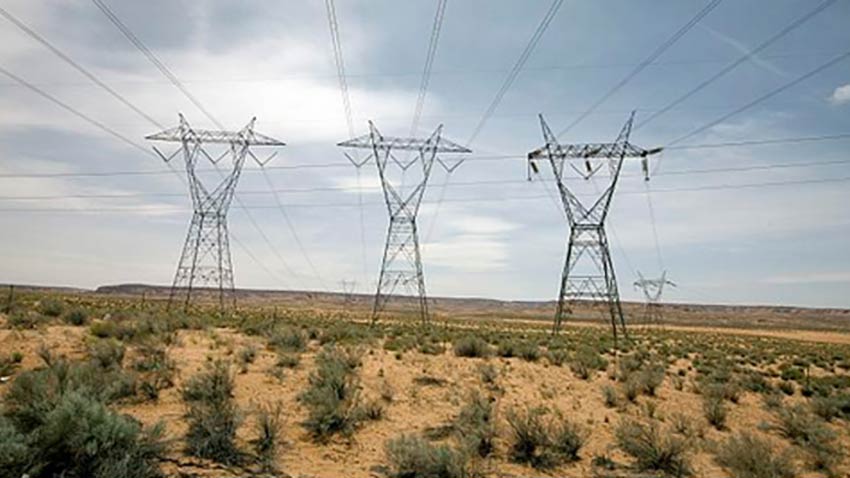
Oral arguments were heard in federal court in Tucson, this week regarding the SunZia Transmission Project which entails two planned 500 kilovolt (kV) transmission lines intended to transport 4,500 megawatts of renewable energy from New Mexico to the Arizona and California markets.
The project, which will span 520 miles of federal, state, and private lands, is anticipated to deliver renewable energy by 2026 if a federal judge allows construction to continue through the San Pedro Valley.
The Tohono O’odham Nation and San Carlos Apache Tribe, joined by conservation non-profits, Archaeology Southwest, and the Center for Biological Diversity, argue that the transmission project threatens irreparable harm and desecration of sacred sites within the San Pedro River Valley.
Howard Shanker, representing the Tohono O’odham, said that the Bureau of Land Management (BLM) failed to adequately identify all historic properties and cultural resources that would be impacted by the transmission line.
“The immense impact of construction and the maintenance of massive transmission towers and the power lines on the sites will harm the integrity of the entire San Pedro Valley and its series of Sobaipuri habitation clusters as an O’odham cultural landscape,” Shanker said.
The plaintiffs want to stop construction of a 50-mile segment and reroute the transmission line around the San Pedro Valley.
Attorneys for the Bureau of Land Management (BLM) argues, too little too late.
The federal government contends that the plaintiffs never challenged the route which was finalized in 2015, and that the segment in question, in the San Pedro Valley, is not on federal land.
Amber Dutton-Bynum, an attorney with the United States Department of Justice, said the plaintiffs had not demonstrated a good reason to pause the project, lacking urgency in alerting the BLM about traditional cultural properties (TCP) – which the defense team argues could have been shared with the agency in 2009.
“Yes there are elements within the Valley which BLM has considered and has avoided other historic properties that have been identified through this process, but the entire Valley has not been identified,” Dutton-Bynum said.
The judge will take the motion to pause the project under advisement but did not give an exact date for a decision.
The initial complaint was filed in January of this year, arguing that the BLM failed to comply with the National Historic Preservation Act (NHPA), Administrative Procedure Act (APA), two executive orders, and President Biden’s November 30, 2022, Memorandum on Uniform Standards for Tribal Consultation for issuing Limited Notices to Proceed (LNTP) for the SunZia project.
Construction of the project began in September 2023.
The complaint says, “Despite repeated calls from Plaintiffs and others to conduct a legally adequate inventory of historic properties and cultural resources that would be impacted by the Project prior to the authorization of any construction activities, BLM issue the LNTPs based on a deeply flawed NHPA Section 106 consultation process that failed to accurately locate and identify historic and cultural resources.”
Section 106 of the NHPA requires federal agencies to identify and assess the potential effects of their actions on historic buildings thus considering public views and concerns about preservation issues before ultimately making final project decisions.
“BLM rushed ahead, obfuscated the review process, and ultimately ignored plaintiffs' repeated requests to consider the project’s devastating effects on a landscape that has provided immense spiritual meaning and cultural values to the tribes for millennia,” said Elizabeth Lewis, attorney for Archaeology Southwest and Center for Biological Diversity.
The plaintiffs allege that BLM didn’t make a good-faith effort to identify the Valley as a TCP until March 2023.
A traditional cultural property by definition, means property of traditional or cultural importance that is meaningful to modern-day communities, including tribes for sustaining cultural legacies.
Not all TCPs are eligible for the National Register of Historic Places (NRHP) and if that’s the case, do not need to be considered any further during the Section 106 compliance but still must be addressed through the National Environmental Protection Act (NEPA) analysis that requires cultural landscape assessments and government-to-government consultation.
Alexander Ritchie, attorney for the San Carlos Apache Tribe argues that BLM knew that the Valley was a TCP as early as 2004.
“BLM staff…and the SunZia experts who [were] so immersed in the practice of archaeology that they couldn’t see the anthropological issues at play,” Ritchie said. “The record shows BLM did not engage in government-to-government consultation until 2023.
“It is our position that the entire Valley does constitute a TCP but again, BLM has not even made those threshold determinations, they haven’t even gathered the information necessary to make those determinations,” Lewis said.
According to BLM, the project underwent NEPA analysis between 2009 and 2015.
Then, BLM issued a Record of Decision (ROD) in January 2015, which approved the proposed right-of-way for the transmission line. The following year, according to plaintiffs' court documents, the bureau issued a right-of-way grant to SunZia Transmission, LLC, which authorized the use of a 400-foot wide corridor across 183 miles of private, state-administered, and BLM-administered lands.
Svend Brandt-Erichsen, intervenor for the SunZia Transmission LLC said that the claims challenging the 2015 decision are time-barred and that the defendants missed their opportunity when the statute of limitations ran out after six years.
“The construction schedule in San Pedro Valley already was compressed by the delays in 2023, which BLM imposed to hear the tribes out,” Brandt-Erichsen said. “We would lose financing for this project if we have an injunction imposed.”

By submitting your comments, you hereby give AZPM the right to post your comments and potentially use them in any other form of media operated by this institution.